Monday, March 30, 2009
Friday, March 27, 2009
Wednesday, March 25, 2009
2 small eruptions occur at Alaska volcano
 ANCHORAGE, Alaska-Alaska's Mount Redoubt erupted at least twice Wednesday as officials from a pipeline company assessed conditions at a nearby oil storage facility to determine whether to remove its contents.The Cook Inlet Pipeline Co., which is partly owned by Chevron Corp., was planning to look at whether a pumping system could be used to offload 6.2 million gallons of oil stored in two tanks, if Chevron decided to remove it.Pipeline contractor Lana Johnson said Chevron has made no decision and that an airplane runway next to the facility was covered with debris and was unusable until cleared. "Right now, nothing can happen, because you can't bring any equipment in, because the runway is closed," Johnson said.The small eruptions Wednesday were picked up by seismic monitors, which showed that a 10-minute blast occurred after 5 a.m. at the volcano about 100 miles southwest of Anchorage. That eruption emitted an ash plume about 15,000 feet high that drifted to sparsely populated areas to the north and northwest, the same direction as earlier explosions since Mount Redoubt began erupting Sunday night.A second eruption about five hours later did not emit an ash cloud detected by radar, which meant ash did not rise above 12,000 feet.Geologists said volcano-caused mud flows and flooding would remain a hazard in the Drift River valley, where the Cook Inlet oil facility is located. Johnson said a Tuesday assessment found no damage to the oil tanks or a cement dike around the farms but that the terminal building was flooded. The facility had evacuated all 11 people from the site Monday.The terminal, which was built in the 1960s by Unocal, stores oil produced from Chevron-owned oil platforms in Cook Inlet. Chevron is redirecting oil that would have been bound for Drift River to two other facilities.The company is working on a contingency plan for when those storage facilities reach capacity, expected to be in 10 days, spokeswoman Roxanne Sinz said.
ANCHORAGE, Alaska-Alaska's Mount Redoubt erupted at least twice Wednesday as officials from a pipeline company assessed conditions at a nearby oil storage facility to determine whether to remove its contents.The Cook Inlet Pipeline Co., which is partly owned by Chevron Corp., was planning to look at whether a pumping system could be used to offload 6.2 million gallons of oil stored in two tanks, if Chevron decided to remove it.Pipeline contractor Lana Johnson said Chevron has made no decision and that an airplane runway next to the facility was covered with debris and was unusable until cleared. "Right now, nothing can happen, because you can't bring any equipment in, because the runway is closed," Johnson said.The small eruptions Wednesday were picked up by seismic monitors, which showed that a 10-minute blast occurred after 5 a.m. at the volcano about 100 miles southwest of Anchorage. That eruption emitted an ash plume about 15,000 feet high that drifted to sparsely populated areas to the north and northwest, the same direction as earlier explosions since Mount Redoubt began erupting Sunday night.A second eruption about five hours later did not emit an ash cloud detected by radar, which meant ash did not rise above 12,000 feet.Geologists said volcano-caused mud flows and flooding would remain a hazard in the Drift River valley, where the Cook Inlet oil facility is located. Johnson said a Tuesday assessment found no damage to the oil tanks or a cement dike around the farms but that the terminal building was flooded. The facility had evacuated all 11 people from the site Monday.The terminal, which was built in the 1960s by Unocal, stores oil produced from Chevron-owned oil platforms in Cook Inlet. Chevron is redirecting oil that would have been bound for Drift River to two other facilities.The company is working on a contingency plan for when those storage facilities reach capacity, expected to be in 10 days, spokeswoman Roxanne Sinz said.By MARY PEMBERTON--Associated Press Writer
As in the days of Noah...
Tuesday, March 24, 2009
Mount Redoubt Rumblings Spark Concern Over Nearby Oil Terminal
 March 23: A Webcam image of Mount Redoubt near Kenai, Alaska, Monday morning, four hours after it had spewed a column of ash.(AP/AVO/USGS)
March 23: A Webcam image of Mount Redoubt near Kenai, Alaska, Monday morning, four hours after it had spewed a column of ash.(AP/AVO/USGS)ANCHORAGE,Alaska-An Alaska volcano continued to rumble Tuesday amid new concerns that eruptions and mud flows will damage a nearby oil terminal where about 6 million gallons of crude are stored. The 10,200-foot Mount Redoubt volcano, about 100 miles southwest of Anchorage, erupted Sunday night. Since then there have been five more explosions; the latest, on Monday night, shot an ash plume into the air that was 40,000 to 50,000 feet high.The volcano has been relatively quiet since, but that is not expected to continue, said Stephanie Prejean, a research geologist with the U.S. Geological Survey. The last time Redoubt erupted was in 1989, when there were more than 20 explosions as magma pushed to the surface and formed domes that later collapsed and sent ash plumes into the air."This is very typical for volcanoes of this type," Prejean said."These domes ooze out of the earth. They are very thick, like toothpaste."She said that when this type of volcano is in the dome-building phase, as it is now, things can happen quickly, making it difficult to warn people about any explosions.Mud flows from the volcano have downed hundreds of trees and filled the Drift River Valley with debris, said USGS research geologist Kristy Wallace. Ash collected near the volcano is fairly coarse, with some pieces measuring 3 inches across, she said. There is evidence that magma has reached the surface.On Monday, 11 people were evacuated by helicopter from the Drift River Terminal, a Chevron-owned facility near the base of the volcano. The terminal has been shut down but oil remains in two of its seven tanks.The Coast Guard is working with the state Department of Environmental Conservation and the Cook Inlet Pipeline Co. to determine if the oil should be removed and how it could be done, said Sara Francis, a Coast Guard spokeswoman.Francis said a flyover of the facility on Monday afternoon indicated that the storage tanks are not damaged. Earthen berms that surround each tank also appear to be OK, though water appeared to have flowed over a berm that surrounds the tank farm."The tank farm is entirely intact, no sheen or spill has been sighted," Francis said. She said all the tanks are "quite distant from any mud or debris."Cook Inletkeeper, a conservation group, on Tuesday called on Chevron and state and federal agencies to remove the oil from the tanks to protect Cook Inlet's valuable fisheries.Bob Shavelson, the group's executive director, said there is flooding and a lot of debris moving into the area near the terminal."Everything is pretty much in flux," he said. "We feel Chevron has an obligation to protect those fisheries."A Chevron spokeswoman did not immediately return a call for comment.Tom Evans, an Alaska Native from the lower Cook Inlet village of Nanwalek, said people depend on inlet fisheries to feed their families."It makes no sense to store oil at the base of an erupting volcano," he said.Alaska Airlines resumed flights to and from Alaska on Tuesday after ash clouds from eruptions this week forced the cancellation of 35 flights.The airline's jets at the Anchorage airport were wrapped in a protective plastic sealant and unsealed Tuesday morning. The airline says the sealant protects aircraft from abrasive ash particles, which post a significant danger to engines.Further eruptions could alter scheduled flights.
http://www.foxnews.com/story/0,2933,510435,00.html
http://www.foxnews.com/story/0,2933,510435,00.html
As in the days of Noah...
Monday, March 23, 2009
Alaska Volcano Sends Ash Plume 9 Miles High
Visit msnbc.com for Breaking News, World News, and News about the Economy
Alaska's Mt Redoubt Eruption Satellite Image
 John Power, a geophysicist with the U.S. Geological Survey Alaska Volcano Observatory shows on a satellite image the eruption of Mount Redoubt, green and purple spot on map, during a news conference in Anchorage, Alaska Monday, March 23, 2009. The volcano erupted three times staring Sunday night sending an ash cloud an estimated 50,000 feet into the air. The Ash cloud is expected to reach the Susitna Valley including Talkeetna, and Willow about 90 miles north of Anchorage.
John Power, a geophysicist with the U.S. Geological Survey Alaska Volcano Observatory shows on a satellite image the eruption of Mount Redoubt, green and purple spot on map, during a news conference in Anchorage, Alaska Monday, March 23, 2009. The volcano erupted three times staring Sunday night sending an ash cloud an estimated 50,000 feet into the air. The Ash cloud is expected to reach the Susitna Valley including Talkeetna, and Willow about 90 miles north of Anchorage.(AP Photo/Al Grillo)
As in the days of Noah...
Mt Redoubt Erupts,Cancelling flights to Alaska
Alaska volcano Mount Redoubt erupts 5 times
 This March 15, 2009, photo released by the Alaska Volcano Observatory / U.S. Geological Survey shows Mount Redoubt looking south at the north flank near Kenai, Alaska. The volcano erupted three times staring Sunday night March 22, 2009, sending an ash cloud an estimated 50,000 feet into the air. The Ash cloud is expected to reach the Susitna Valley including Talkeetna, and Willow about 90 miles north of Anchorage.
This March 15, 2009, photo released by the Alaska Volcano Observatory / U.S. Geological Survey shows Mount Redoubt looking south at the north flank near Kenai, Alaska. The volcano erupted three times staring Sunday night March 22, 2009, sending an ash cloud an estimated 50,000 feet into the air. The Ash cloud is expected to reach the Susitna Valley including Talkeetna, and Willow about 90 miles north of Anchorage. (AP Photo/ Alaska Volcano Observatory / U.S. Geological Survey, Heather Bleick)
WILLOW, Alaska-Alaska's Mount Redoubt volcano erupted five times overnight, sending an ash plume more than 9 miles into the air in the volcano's first emissions in nearly 20 years.Residents in the state's largest city were spared from falling ash, though fine gray dust was falling Monday morning on small communities north of Anchorage."It's coming down," Rita Jackson, 56, said early Monday morning at a 24-hour grocery store in Willow, about 50 miles north of Anchorage. She slid her fingers across the hood of her car, through a dusting of ash.Ash from Alaska's volcanos is like a rock fragment with jagged edges and has been used as an industrial abrasive. It can injure skin, eyes and breathing passages. The young, the elderly and people with respiratory problems are especially susceptible to ash-related health problems. Ash can also cause damage engines in planes, cars and other vehicles.Alaska Airlines on Monday canceled 19 flights in and out of the Anchorage international airport because of the ash.Elmendorf Air Force Base in Anchorage told only essential personnel to report to work.The Air Force says 60 planes, including fighter jets, cargo aircraft and a 747 commercial plane, were being sheltered.The first eruption, in a sparsely area across Cook Inlet from the Kenai Peninsula, occurred at 10:38 p.m. Sunday and the fifth happened at 4:30 a.m. Monday, according to the Alaska Volcano Observatory.The wind was taking the ash cloud away from Anchorage, toward Willow and Talkneetna, near Mount McKinley, North America's largest mountain in Denali National Park.
Dave Stricklan, a hydrometeorogical technician with the National Weather Service, expected very fine ash."Just kind of a light dusting," he said. He said the significant amount of ash probably dropped immediately, right down the side of the volcano."The heavier stuff drops out very quickly, and then the other stuff filters out. There's going to be a very fine amount of it that's going to be suspended in the atmosphere for quite some time,"he said."The finer ash is going to travel farther, and any ash can affect aviation safety."Jackson said she was taking a sip of coffee when she tasted something funny on her lips-ash.She was experiencing other affects, too."My eyes are itching really bad," she said as she hurried to get out of the store and to her car.Jackson, who unexpectedly got the day off, hurried home from the grocery store to secure a motorcycle, snowmachine and vehicles under protective blue tarps.The 10,200-foot Redoubt Volcano, roughly 100 miles southwest of Anchorage, last erupted during a four-month period from 1989-90.In its last eruption, Redoubt sent ash 150 miles away into the path of a KLM jet and its four engines flamed out. The jet dropped more than 2 miles before the crew was able to restart all engines and land safely. The plane required $80 million in repairs.Meanwhile, the volcano became restless earlier this year. The observatory had warned in late January that an eruption could occur at any time.Increased earthquake activity over the past 48 hours prompted scientists to raise the alert level for Mount Redoubt on Sunday.On Sunday morning, 40 to 50 earthquakes were being recorded every hour.A steam plume rising about 1,000 feet above the mountain peak was observed Saturday.
Associated Press Writer Mark Thiessen in Anchorage contributed to this report.
On the Net:
Alaska Volcano Observatory: http://www.avo.alaska.edu/
Dave Stricklan, a hydrometeorogical technician with the National Weather Service, expected very fine ash."Just kind of a light dusting," he said. He said the significant amount of ash probably dropped immediately, right down the side of the volcano."The heavier stuff drops out very quickly, and then the other stuff filters out. There's going to be a very fine amount of it that's going to be suspended in the atmosphere for quite some time,"he said."The finer ash is going to travel farther, and any ash can affect aviation safety."Jackson said she was taking a sip of coffee when she tasted something funny on her lips-ash.She was experiencing other affects, too."My eyes are itching really bad," she said as she hurried to get out of the store and to her car.Jackson, who unexpectedly got the day off, hurried home from the grocery store to secure a motorcycle, snowmachine and vehicles under protective blue tarps.The 10,200-foot Redoubt Volcano, roughly 100 miles southwest of Anchorage, last erupted during a four-month period from 1989-90.In its last eruption, Redoubt sent ash 150 miles away into the path of a KLM jet and its four engines flamed out. The jet dropped more than 2 miles before the crew was able to restart all engines and land safely. The plane required $80 million in repairs.Meanwhile, the volcano became restless earlier this year. The observatory had warned in late January that an eruption could occur at any time.Increased earthquake activity over the past 48 hours prompted scientists to raise the alert level for Mount Redoubt on Sunday.On Sunday morning, 40 to 50 earthquakes were being recorded every hour.A steam plume rising about 1,000 feet above the mountain peak was observed Saturday.
Associated Press Writer Mark Thiessen in Anchorage contributed to this report.
On the Net:
Alaska Volcano Observatory: http://www.avo.alaska.edu/
By MARY PEMBERTON, Associated Press Writer
As in the days of Noah...
MT REDOUBT:LIVE WEBCAM
Alaska's Mount Redoubt Erupts Three Times
 BREAKING NEWS--Alaska's Mt. Redoubt volcano erupted late Monday and early Tuesday in "three large explosions," sending an ash plume an estimated 50,000 feet into the air, the Alaska Volcano Observatory reported. Geologists at the observatory say the volcano, located 100 miles southwest of Anchorage, erupted three times late Sunday and early Monday.Geophysicist John Power said, "this is a fairly large eruption, close to the larger cities in Alaska."He says no cities have yet reported any ash fall from the volcano, but noted that it's still early.Winds were expected to carry the ash plume north toward the Susitna Valley, possibly missing Anchorage to the east, the National Weather Service told the Anchorage Daily News."It looks like Anchorage might dodge the bullet," Alaska Volcano Observatory geophysicist Peter Cervelli told the paper.The volcano observatory raised the aviation color code to Red,its highest level,and the alert level to Warning after the eruption began at 10:38 p.m.local time (2:38 a.m. Monday EDT.)An official at Anchorage International Airport told the Daily News early Monday there were no immediate plans to close the airport.Residents of south-central Alaska have kept a close eye on Redoubt since the observatory on Jan. 25 warned that an eruption could occur at any moment. The alert level was downgraded last week after nearly two months.Just after 1 p.m. Sunday, however, seismic activity picked up again."We got a return of this stuff we call volcanic tremors," said geologist Chris Waythomas."Think of the phenomenon that produces sound in an organ pipe."Instead of sound waves in a pipe, geologists detect movement of magma within cracks and fractures of the mountain that resonates and produces a distinct signal."We think it's associated with the hydrothermal system there. It's being reinvigorated," Waythomas said.The tremors lasted about four hours and then settled down.An observatory flight Sunday reported that a steam and ash plume rose as high as 15,000 feet (4,600 meters) above sea level and produced minor ash fall on the upper south flank of the mountain. Later reports indicated the plume had changed into mostly steam.Ash emission had not been seen before, Waythomas said, and until samples are taken, geologists will not know whether it's new magma or, more likely, old ground-up material from previous episodes.Other signs that a volcano could erupt are deformities in the landscape and the mix of gases escaping from vents on the side of the mountain.Alaska volcanos typically explode and shoot ash upward, sometimes to 50,000 feet (15,000 meters), high into the jet stream. An eruption of Redoubt on Dec. 15, 1989, sent ash 150 miles (240 kilometers) away into the path of a KLM jet, stopping its engines. The jet dropped more than two miles (three kilometers) before the crew was able to restart engines and land safely at Anchorage.
BREAKING NEWS--Alaska's Mt. Redoubt volcano erupted late Monday and early Tuesday in "three large explosions," sending an ash plume an estimated 50,000 feet into the air, the Alaska Volcano Observatory reported. Geologists at the observatory say the volcano, located 100 miles southwest of Anchorage, erupted three times late Sunday and early Monday.Geophysicist John Power said, "this is a fairly large eruption, close to the larger cities in Alaska."He says no cities have yet reported any ash fall from the volcano, but noted that it's still early.Winds were expected to carry the ash plume north toward the Susitna Valley, possibly missing Anchorage to the east, the National Weather Service told the Anchorage Daily News."It looks like Anchorage might dodge the bullet," Alaska Volcano Observatory geophysicist Peter Cervelli told the paper.The volcano observatory raised the aviation color code to Red,its highest level,and the alert level to Warning after the eruption began at 10:38 p.m.local time (2:38 a.m. Monday EDT.)An official at Anchorage International Airport told the Daily News early Monday there were no immediate plans to close the airport.Residents of south-central Alaska have kept a close eye on Redoubt since the observatory on Jan. 25 warned that an eruption could occur at any moment. The alert level was downgraded last week after nearly two months.Just after 1 p.m. Sunday, however, seismic activity picked up again."We got a return of this stuff we call volcanic tremors," said geologist Chris Waythomas."Think of the phenomenon that produces sound in an organ pipe."Instead of sound waves in a pipe, geologists detect movement of magma within cracks and fractures of the mountain that resonates and produces a distinct signal."We think it's associated with the hydrothermal system there. It's being reinvigorated," Waythomas said.The tremors lasted about four hours and then settled down.An observatory flight Sunday reported that a steam and ash plume rose as high as 15,000 feet (4,600 meters) above sea level and produced minor ash fall on the upper south flank of the mountain. Later reports indicated the plume had changed into mostly steam.Ash emission had not been seen before, Waythomas said, and until samples are taken, geologists will not know whether it's new magma or, more likely, old ground-up material from previous episodes.Other signs that a volcano could erupt are deformities in the landscape and the mix of gases escaping from vents on the side of the mountain.Alaska volcanos typically explode and shoot ash upward, sometimes to 50,000 feet (15,000 meters), high into the jet stream. An eruption of Redoubt on Dec. 15, 1989, sent ash 150 miles (240 kilometers) away into the path of a KLM jet, stopping its engines. The jet dropped more than two miles (three kilometers) before the crew was able to restart engines and land safely at Anchorage.• Click to view photos of the volcano.
• WEBCAMS: Monitor Alaska's volcanoes live.
As in the days of Noah...
Thursday, March 19, 2009
Major quake strikes off Tonga:Tsunami Warning Cancelled
 A tsunami warning was issued and then canceled Friday shortly after a major earthquake struck early Friday off the coast of Tonga.The earthquake "generated a small tsunami," but there is "no evidence of destructive waves," said Stewart Weinstein, assistant director of the Pacific Tsunami Warning Center in Hawaii.Robert Cessaro, a geophysicist with the center, said: "There's a tsunami in the water, but it's not gonna do much."On the largest island in the Tonga chain, Tongatapu, in the capital city of Nukualofa, a clerk at the International Dateline Hotel said the earthquake was felt but caused no damage.At the Fafa Island Resort, off Nukualofa, Joseph Sanladerer told CNN that the earthquake woke up guests and shook wine glasses from racks, but caused no significant damage.The tsunami center issued the regional tsunami warning for parts of the Pacific near the quake's epicenter, about 213 kilometers (132 miles) south-southeast of Nuku'alofa, Tonga. The quake struck at 6:17 a.m. local time (6:17 p.m. GMT).At a depth of just 6.2 miles (10 km), it is considered a shallow earthquake. Typically, the shallower the quake, the more destructive potential it carries. But that is not always the case.The USGS recorded the quake as 7.9 magnitude; the Pacific Tsunami Warning Center said it was 7.7. There were no immediate reports of damage or death.The earthquake struck a few hours after a volcano erupted off Tongatapu, Tonga, about 200 km away.Ken Hudnut, a geophysicist at the U.S. Geological Survey in Pasadena, California, said: "The association with the volcanic activity seems to be an interesting added dimension to this. It's not clear at this point that there is a direct association, but it seems suggestive at this point."The Indo-Australian geologic plate goes underneath the Pacific plate there, making earthquakes fairly common events in the area, called the Tonga Kermadec trench, he said.
A tsunami warning was issued and then canceled Friday shortly after a major earthquake struck early Friday off the coast of Tonga.The earthquake "generated a small tsunami," but there is "no evidence of destructive waves," said Stewart Weinstein, assistant director of the Pacific Tsunami Warning Center in Hawaii.Robert Cessaro, a geophysicist with the center, said: "There's a tsunami in the water, but it's not gonna do much."On the largest island in the Tonga chain, Tongatapu, in the capital city of Nukualofa, a clerk at the International Dateline Hotel said the earthquake was felt but caused no damage.At the Fafa Island Resort, off Nukualofa, Joseph Sanladerer told CNN that the earthquake woke up guests and shook wine glasses from racks, but caused no significant damage.The tsunami center issued the regional tsunami warning for parts of the Pacific near the quake's epicenter, about 213 kilometers (132 miles) south-southeast of Nuku'alofa, Tonga. The quake struck at 6:17 a.m. local time (6:17 p.m. GMT).At a depth of just 6.2 miles (10 km), it is considered a shallow earthquake. Typically, the shallower the quake, the more destructive potential it carries. But that is not always the case.The USGS recorded the quake as 7.9 magnitude; the Pacific Tsunami Warning Center said it was 7.7. There were no immediate reports of damage or death.The earthquake struck a few hours after a volcano erupted off Tongatapu, Tonga, about 200 km away.Ken Hudnut, a geophysicist at the U.S. Geological Survey in Pasadena, California, said: "The association with the volcanic activity seems to be an interesting added dimension to this. It's not clear at this point that there is a direct association, but it seems suggestive at this point."The Indo-Australian geologic plate goes underneath the Pacific plate there, making earthquakes fairly common events in the area, called the Tonga Kermadec trench, he said.As in the days of Noah...
Tsunami Warning Issued After 7.9 Magnitude Quake Hits South Pacific
 A tsunami warning has been issued after a 7.9 magnitude earthquake struck in the South Pacific Thursday, 130 miles from Tonga and 300 miles from Fiji, the U.S. Geological Survey reported. There were no immediate reports of injuries or damage.The Pacific Tsunami Warning Center has issued a tsunami warning for neighboring islands, but it was not immediately known if a tsunami had been generated.It also advises that some coastal areas of Hawaii could see a rise in sea level and strong currents lasting up to several hours."An earthquake of this size has the potential to generate a destructive tsunami," Reuters quotes the Pacific Tsunami Warning Center.The quake reportedly had a depth of of 6.2 miles.
A tsunami warning has been issued after a 7.9 magnitude earthquake struck in the South Pacific Thursday, 130 miles from Tonga and 300 miles from Fiji, the U.S. Geological Survey reported. There were no immediate reports of injuries or damage.The Pacific Tsunami Warning Center has issued a tsunami warning for neighboring islands, but it was not immediately known if a tsunami had been generated.It also advises that some coastal areas of Hawaii could see a rise in sea level and strong currents lasting up to several hours."An earthquake of this size has the potential to generate a destructive tsunami," Reuters quotes the Pacific Tsunami Warning Center.The quake reportedly had a depth of of 6.2 miles.Click here for more information from the USGS.
http://www.foxnews.com/story/0,2933,509824,00.html
As in the days of Noah...
7.9 Mw - TONGA REGION
 Preliminary Earthquake Report
Preliminary Earthquake ReportMagnitude
7.9 Mw
Date-Time
19 Mar 2009 18:17:37 UTC
20 Mar 2009 06:17:37 near epicenter
19 Mar 2009 12:17:37 standard time in your timezone
Location
23.015S 174.781W
Depth
10 km
Distances
213 km (132 miles) SSE (167 degrees) of NUKU'ALOFA, Tonga
492 km (306 miles) S (190 degrees) of Neiafu, Tonga
2696 km (1675 miles) WSW (253 degrees) of PAPEETE, Tahiti, French Polynesia
Location Uncertainty
Horizontal: 9.4 km; Vertical
Parameters
Nph = 82; Dmin = 759.2 km; Rmss = 1.18 seconds; Gp = 57°M-type = Mw; Version = 7
Event ID
US 2009ejbr ***This event supersedes event AT00748666.
For updates, maps, and technical information, see: Event Page or U.S.G.S. Earthquake Hazards Program
National Earthquake Information CenterU.S. Geological Survey
As in the days of Noah...
Undersea volcano Off the Coast of Tonga
 Spectators watch as an undersea volcano erupts off the coast of Tonga, tossing clouds of smoke, steam and ash thousands of feet (meters) into the sky above the South Pacific ocean, Wednesday, March 18, 2009.
Spectators watch as an undersea volcano erupts off the coast of Tonga, tossing clouds of smoke, steam and ash thousands of feet (meters) into the sky above the South Pacific ocean, Wednesday, March 18, 2009.The eruption was at sea about 6 miles (10 kilometers) from the southwest coast off the main island of Tongatapu, an area where up to 36 undersea volcanoes are clustered.
(AP Photo/Lothar Slabon via the New Zealand Herald)
As in the days of Noah...
Tongan inspection team heads to undersea volcano
 An undersea volcano erupts off the coast of Tonga, tossing clouds of smoke, steam and ash thousands of feet (meters) into the sky above the South Pacific ocean, Tuesday, March 17, 2009. The eruption was at sea about 6 miles (10 kilometers) from the southwest coast of the main island of Tongatapu an area where up to 36 undersea volcanoes are clustered.
An undersea volcano erupts off the coast of Tonga, tossing clouds of smoke, steam and ash thousands of feet (meters) into the sky above the South Pacific ocean, Tuesday, March 17, 2009. The eruption was at sea about 6 miles (10 kilometers) from the southwest coast of the main island of Tongatapu an area where up to 36 undersea volcanoes are clustered.(AP Photo/Trevor Gregory)
NUKU'ALOFA, Tonga – Scientists sailed Thursday to inspect an undersea volcano that has been erupting for days near Tonga-shooting smoke, steam and ash thousands of feet (meters) into the sky above the South Pacific ocean.Authorities said Thursday the eruption does not pose any danger to islanders at this stage, and there have been no reports of fish or other animals being affected.Spectacular columns are spewing out of the sea about 6 miles (10 kilometers) from the southwest coast off the main island of Tongatapu-an area where up to 36 undersea volcanoes are clustered, geologists said.Trade winds continued to blow gas and steam away from the island Thursday.Tonga's police deputy commander Taniela Faletau said coastal villages close to the roiling ocean site were not yet at risk and that no warnings had been issued.Police were waiting for a government team of officials and scientists to survey the area and report on their observations before taking any action.Coastal residents said the steam and ash column first appeared on Monday morning, after a series of sharp earthquakes were felt in the capital, Nuku'alofa."This is not unusual for this area and we expect this to happen here at any time," said Keleti Mafi, Tonga's geological service head.The underwater eruption was taking place near the low-lying twin volcanic islands of Hunga Tonga and Hunga Ha'apai, and within sight of the capital, Nuku'alofa.Large amounts of pumice thrown up by the erupting volcano would likely clog beaches on the southern coast of nearby Fiji islands within a short time, Mafi said.Tonga, a 170-island archipelago about halfway between Australia and Tahiti, is part of the Pacific "ring of fire"-an arc of earthquake and volcanic zones stretching from Chile in South America through Alaska and down through Vanuatu to Tonga.
http://news.yahoo.com/s/ap/as_tonga_volcano;_ylt=ArOi0DfKBHWMWlczs0vcHziaK8MA
http://news.yahoo.com/s/ap/as_tonga_volcano;_ylt=ArOi0DfKBHWMWlczs0vcHziaK8MA
As in the days of Noah...
Undersea volcano erupts off Tonga coast:Amazing Images of the Eruption
Wednesday, March 18, 2009
Undersea Volcano Erupts Off Tonga Coast
 Mar. 18: An undersea volcano erupts off the coast of Tonga, tossing clouds of smoke, steam and ash thousands of feet into the sky.(AP/Matangi Tonga Online)
Mar. 18: An undersea volcano erupts off the coast of Tonga, tossing clouds of smoke, steam and ash thousands of feet into the sky.(AP/Matangi Tonga Online)NUKU'ALOFA,Tonga-An undersea volcano erupted off the coast of Tonga shooting clouds of smoke, steam and ash thousands of feet into the sky above the South Pacific ocean, officials said Wednesday.Spectacular columns spewed out of the sea about 6 miles from the southwest coast off the main island of Tongatapu-an area where up to 36 undersea volcanoes are clustered, said Tonga's geological service head, Keleti Mafi."It's a very significant eruption, on quite a large scale," he told The Associated Press.There was no sign the offshore eruption posed any danger to residents, he said, with trade winds blowing gas and steam away from the island. Residents said the steam and ash column first appeared on Monday morning, after a series of sharp earthquakes were felt in the capital, Nuku'alofa."This is not unusual for this area and we expect this to happen here at any time," Mafi said, adding that a similar eruption took place there in 2002.A Defense Force boat was expected to travel to the region soon to check the area.It was likely the underwater eruption was taking place to the west of the low-lying twin volcanic islands of Hunga Tonga and Hunga Ha'apai, within sight of Nuku'alofa.Large amounts of pumice thrown up by the erupting volcano would likely clog beaches on the southern coast of nearby Fiji islands within a short time, he said.Tonga, a 170-island archipelago about halfway between Australia and Tahiti, is part of the Pacific "ring of fire"-an arc of earthquake and volcanic zones stretching from Chile in South America through Alaska and down through Vanuatu to Tonga.
By A
By A
As in the days of Noah...
Subscribe to:
Posts (Atom)

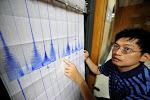
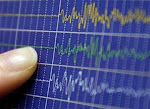
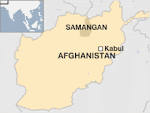






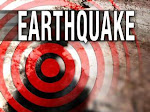
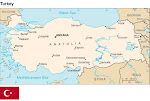
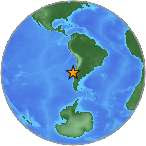




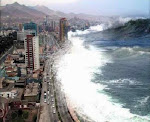

.jpg)


.bmp)




